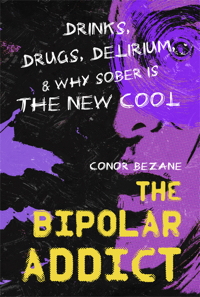Note: This article contains information about self-injury, which can be a trigger for some readers. Trigger Warning.
Trent Reznor of Nine Inch Nails is a heroin addict who has been clean since the ‘90s. He describes self-harm vividly in “Hurt,”off 1994’s The Downward Spiral:
I hurt myself today
To see if I still feel
I focus on the pain
The only thing that’s real
It’s a headspace all too common for those of us with mental illness.
You’re numb. Empty. Dulled. You may not be suicidal, but you may feel like the only thing to do is grab a pair of scissors, a knife, or even nail clippers to hurt yourself. You slice your flesh. It’s dangerous and could give you permanent scars. You may be manic, depressed, in a mixed state, or anxious and the only way you can think of to calm yourself down, to feel alive, or to feel any kind of emotion at all is to cut yourself.
Cutting, referred to in psychiatric terms as non-suicidal self-injury, is a menace to the mental health community. Up to 18 percent of the world adolescent population has self-injured, according to a 2012 peer review of 52 studies from 2005-2011. That’s nearly one in five teens.
In fact, self-harm usually begins when you are a teenager. It’s almost stereotypical among goths—a fact backed up by a 2015 study. And even though a goth character on the Netflix teen drama 13 Reasons Why was portrayed as having self-injured, such mention of self-injury in pop culture is rare despite its ubiquity.
So why do people cut? The behavior is a coping mechanism — but obviously not a healthy one.
Endorphins can be triggered by cutting or self-injuring, causing the body’s pain-killing hormones to kick in, thereby lifting a person’s mood.
Self-harm is not a mental illness, but it often dovetails with certain psychiatric conditions, including bipolar, borderline personality disorder, eating disorders, PTSD, and anxiety.
People most vulnerable to self-harm include those who have experienced abuse, neglect, or trauma. Anger is often the impetus for self-injury.
According to Psychology Today, physical pain takes away emotional pain. In those who are inclined to cut or do any type of self-injury, doing so fills the person with a sense of calm and relief, a feeling that can become addictive.
In interviewing people for my upcoming book, The Bipolar Addict, I encountered several individuals who had a proclivity toward cutting as well as burning, pulling at their hair, or punching themselves. One person featured in The Bipolar Addict, Kelly, talks about obsessive behaviors associated with self-harm, including preoccupation with antiseptic and Band-Aids and inflicting the same number of cuts on each leg.
Cutting is often done in secret, on areas of the body easily covered by clothes. Because of this, self-injurers may be inclined to wear long-sleeved shirts and long pants even in hot weather to hide their injuries.
One of the most important treatments for cutting is psychotherapy, which can teach new coping mechanisms. Antidepressants such as Prozac and Paxil may ease the urge to self-injure. Cognitive behavioral therapy and dialectical behavioral therapy are additional measures taken to address individuals who self-harm. You may also need a stay in the hospital.
According to the National Alliance on Mental Illness (NAMI), it takes more than willpower to quit self-injury. It takes help from a therapist and often the support of friends and family.








